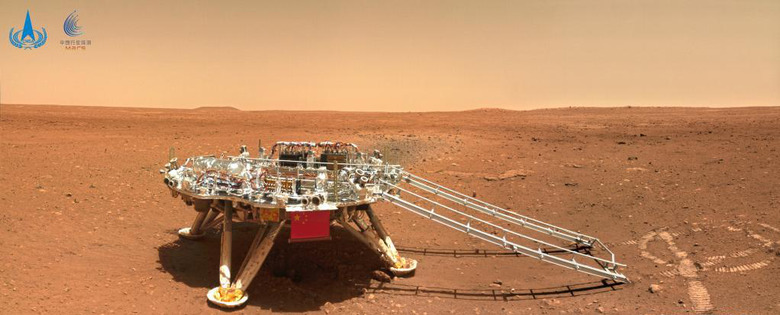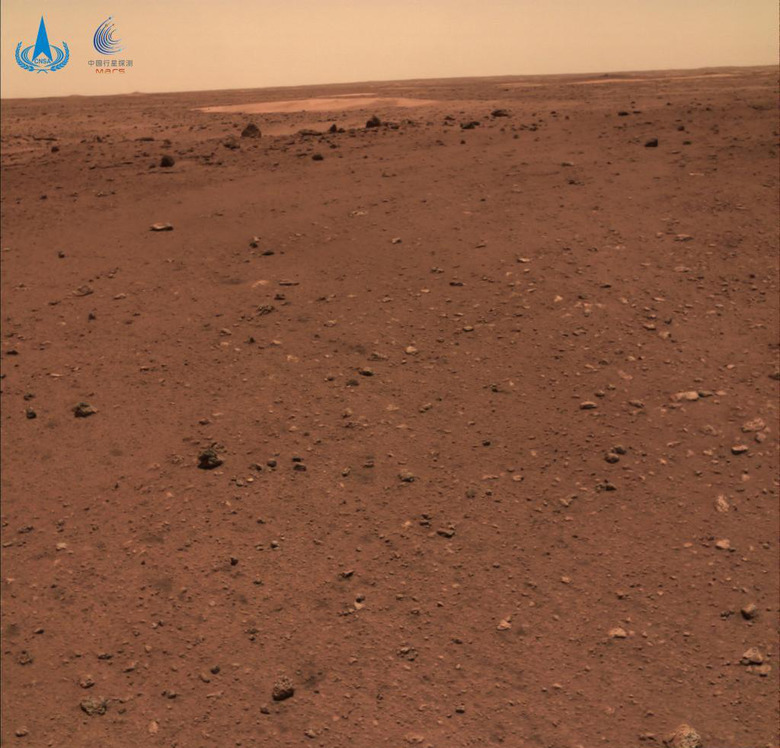China Releases New Mars Rover Selfie On The Red Planet
China's space agency has released new images taken by its Mars rover, including a panorama of the landing site where Zhurong first touched down on the red planet. The images include a selfie of the rover, which the China National Space Administration (CNSA) took using a special, detachable camera.
Zhurong left that roughly 33 feet away from the landing platform, with the camera being deposited from the bottom of the rover. It then trundled back to pose, and the images were wirelessly transferred using it as a relay to the Mars orbiter.

It's been a fairly busy year for Mars arrivals. NASA's Perseverance rover – complete with the Ingenuity Mars helicopter – touched down in Jezero Crater, while China's Tianwen-1 delivered Zhurong to Utopia Planitia in the northern hemisphere of the planet. It landed on May 15, and then drove down from the landing platform on May 22, making China the second country to land and operate a rover on Mars.

Since then, Zhurong has been undertaking scientific exploration, with the CNSA saying that all of the rover's instruments are currently active. That's considerably faster than NASA has been waking up Perseverance's systems, with the US rover only just beginning to undertake its own science experiments. However the expected lifespans of the two projects are very different.
Perseverance is expected to operate for at least two years, though there's the possibility for the NASA rover to continue work beyond that initial mission schedule. Zhurong, in contrast, has an expected lifespan of at least 90 Martian days, or around three Earth months, the Chinese space agency says. The orbiter with which it communicates with mission control back home has a design life of one Martian year, or around 687 Earth days.

Among China's goals with the rover are to take high-resolution 3D images of the surface of Mars, and carry out analysis of the composition of the planet's rock. It also has instruments to explore sub-surface structure and potentially identify any traces of ice, plus the magnetic field on the planet.
It's the second set of media from Mars that the CNSA has released since the rover landed, the first being released in mid-May. Along with Zhurong's own shots, the agency also released images from the orbiter overhead, showing the respective location of the rover and the landing pallor. You can also see evidence of the parachute which slowed its descent, the CNSA says, and the entry capsule which protected Zhurong.
